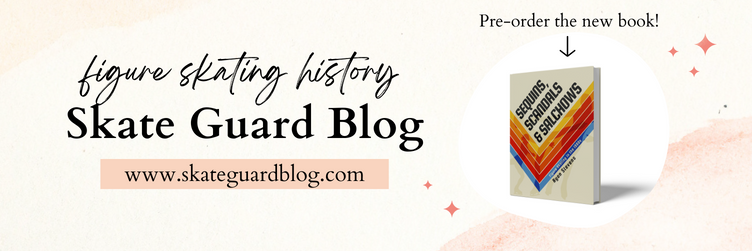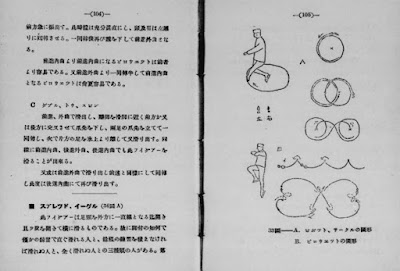THE PAIRS COMPETITION
Irina Rodnina and Aleksandr Zaitsev were the only two defending European Champions to return to defend their title in Helsinki. Six of the top ten teams had moved on at the end of the Olympic season the year prior, including Olympic Medallists Manuela Groß and Uwe Kagelmann and Romy Kermer
and Rolf Österreich.
Soviet pairs were one-two-three in the short program, with all nine judges placing Rodnina and Zaitsev first. A packed house watched the free skate final, where Rodnina claimed her ninth title and Zaitsev his fifth. Irina Vorobieva and Alexandr Vlasov, the previous year's bronze medallists, moved up to take the silver and twelve year old Marina Cherkasova and her eighteen year old partner Sergei Shakrai gained the greatest applause of the day and the bronze.
It was the second Soviet sweep of the medal podium in pairs at Europeans - the first being in Garmisch-Partenkirchen in 1969. The fourth and fifth places went to two East German pairs who would go on to achieve great things in the sport - Manuela Mager and Uwe Bewersdorf and Sabine Baeß and Tassilo Thierbach.
THE ICE DANCE COMPETITION
The defending Olympic, World and European Champions Lyudmila Pakhomova and Aleksandr Gorshkov had retired as had three time World and European Medallists Hilary Green and Glyn Watts. Irina Moiseeva and Andrei Minenkov, who had won the World Championships in 1975 and the silver medal at the 1976 Olympics, appeared to be the heirs apparent to the European dance crown and there was little surprise when they amassed a comfortable lead in the compulsories and OSP.
THE WOMEN'S COMPETITION
World Champions and Olympic Medallists Dianne de Leeuw and Christine Errath had moved on from the amateur ranks, as had Isabel de Navarre, the winner of the figures at the 1976 Olympics in Innsbruck. Anett Pötzsch, who had medalled at the 1975 and 1976 Europeans, trained alongside Errath with Jutta Müller in Karl-Marx-Stadt. She took a healthy lead in the figures and won the short program as well, giving her a two and a half point lead over West Germany's Dagmar Lurz entering the free skate.
In one of her finest performances, Anett Pötzsch landed three triples to easily win her first European title. The silver went to Dagmar Lurz; the bronze to Italy's Susanna Driano.
Fourteen year old Denise Biellmann stole the show in the free skate, earning the loudest applause and exactly the same points total in the free skate as Pötzsch. Unfortunately, as was all too often in the case, her poor showing in the figures kept her down in sixth overall in her first bid for the title.
Fourteen year old Debbie Cottrill of Solihull almost didn't compete. Shortly after the British Championships, the National Skating Association announced that they wouldn't pay for her coach Armand Perren's travel expenses. Debbie's father Clem threatened to pull her out unless her coach attended. The Midland Soccer Writers' Association heard of the unfortunate situation and with the aid of the Midland industralists, raised four hundred and fifty pounds to pay Perren's fare. It wasn't the first instance of the National Skating Association being funny about covering travel costs. If you haven't read Courtney Jones' book yet, there's an interesting little anecdote in there about that!
THE MEN'S COMPETITION
1976 Olympic, World and European Champion John Curry had turned professional and as one might expect, the British press closed in on Robin Cousins liked a zombie after brains. In a 'next big thing' article in "The Daily Mirror", the nineteen year old from Bristol told reporter Graham Baker, "The East Germans and Russians look as though they've come out of factory... Like John, I always prefer individualism to that manufactured look."
Robin Cousins placed seventh in the figures, six places higher than he'd been in 1976. It was the first time he'd cracked the top ten in the compulsories at an ISU Championship. He placed an impressive sixth on the counter, a remarkable finish considering the fact he'd broken his toe two weeks before the British Championships in Richmond the month prior. The winner of the figures was 1976 Olympic Silver Medallist Vladimir Kovalev. Former European Champion Jan Hoffmann placed second and Finland's Pekka Leskinen was third.
With a clean triple toe-loop/double loop combination and double Lutz, Robin Cousins moved up to fourth overall with the second-best short program. Though third in the short program, Vladimir Kovalev maintained a narrow lead entering the free skate.
Twenty one year old Jan Hoffmann regained his title from 1974 with a five-triple free skate, while Kovalev dropped to second with two successful triples and a fall on a triple toe-loop.
Robin Cousins earned the highest marks for presentation. He was third overall but earned a supplementary silver medal for his placements in the free skating events in addition to his bronze. Like Hilary Green and Glyn Watts in the dance, he was coached by the redoubtable Miss Gladys Hogg. She didn't fly, so Robin went alone. Joan Slater sat with him in the kiss and cry. It was in Helsinki that he began his relationship with the Fassi's. They advised him at that year's Worlds in Tokyo.
Pekka Leskinen's fifth place finish was quite a big deal at the time. A Finnish man hadn't placed in the top five at Europeans since Marcus Nikkanen in 1935.
In a write-up for "Skating" magazine, Jean Kavalski made a point of noting how much of a standout Yuri Ovchinnikov was in Helsinki artistically. She wrote, "Great artistic strides have been taken in the men's competition, especially in the skating of Yuri Ovchinnikov. Yuri placed fourth in all aspects at Helsinki and changed his style considerably this year. He said Toller Cranston's innovativeness made him think that he should develop his own style more freely and more naturally. He does not skate like Toller and makes it clear that it was not so much Toller's own style of skating that caused him to change, but rather Toller's courage to follow his own creative desires in skating. Thus, Yuri has created a unique style which dazzled the audiences in Helsinki. In the past, Ovchinnikov's jumps were the highlight of his program, the excellence and artistry of the overall performance is now his goal."
Skate Guard is a blog dedicated to preserving the rich, colourful and fascinating history of figure skating. Over ten years, the blog has featured over a thousand free articles covering all aspects of the sport's history, as well as four compelling in-depth features. To read the latest articles, follow the blog on Facebook, Twitter, Pinterest and YouTube. If you enjoy Skate Guard, please show your support for this archive by ordering a copy of figure skating reference books "The Almanac of Canadian Figure Skating", "Technical Merit: A History of Figure Skating Jumps" and "A Bibliography of Figure Skating": https://skateguard1.blogspot.com/p/buy-book.html.






















.png)








.png)








